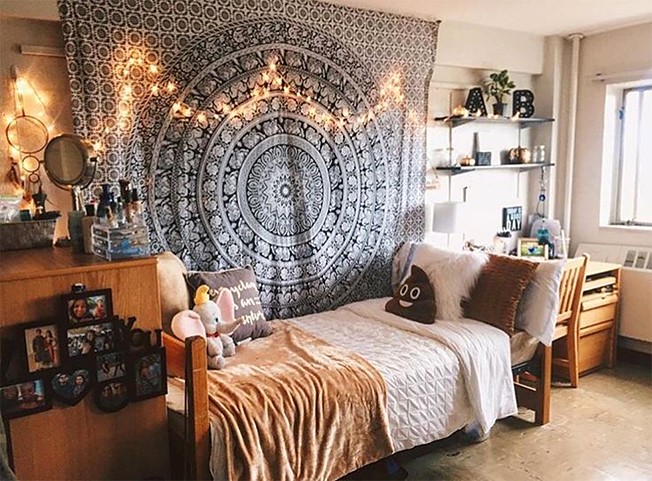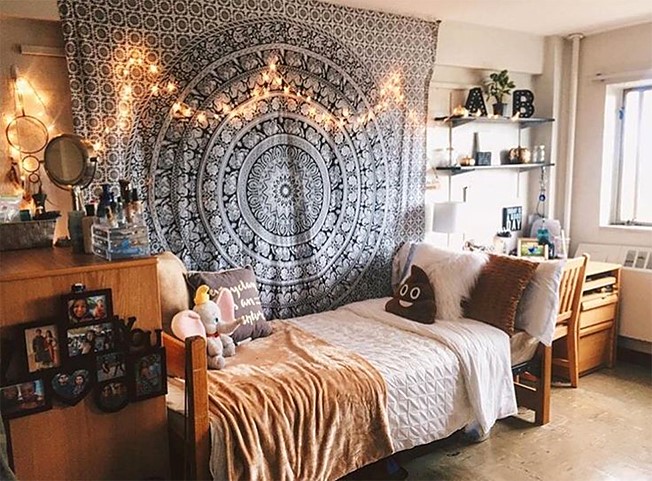Waving the TAPESTRY is art and dedication . This textile art is popular all over and loved by all .
Introduction
Tapestry is a type of textile art, and woven by hand on a loom. Tapestry is weft-faced weaving, in which all the warp threads are hidden in the completed work, unlike most woven fabrics, where both the warp and weft threads may be visible.
In tapestry weaving, the weft threads are usually closed; The artisan moves each colored weft back and forth in its own small pattern area. It is a plain weft faced weave in which weft threads of different colors are worked over parts of the warp to form the design.
“The Unicorn is Found, around 1495-1505, The Cloisters, Metropolitan Museum of Art, New York City,” says one of the tapestries in the series The Hunt of the Unicorn: The Unicorn is Found.

History of the Wall Tapestry
Tapestry is relatively delicate, and difficult to make, so most historical pieces are intended to hang vertically on a wall (or sometimes in a tent), or sometimes horizontally on a piece of furniture like a table or bed.
Some periods made shorter pieces, often long and narrow, and were used as borders for other garments. European tapestries are typically viewed from one side, and a plain lining is added to the back. However, in other traditions, such as the Chinese casei and that of pre-Columbian Peru, tapestries can be seen from both sides.
Most weavers use natural warp yarns such as wool, linen or cotton. Weft threads are usually wool or cotton but may include silk, gold, silver or other substitutes.
Metropolitan Museum of Art
Moved from Crome Court to the Tapestry Room, the Metropolitan Museum of Art, made to measure 18th-century Gobelin tapestries, which also covered the chairs.
Tapestries would be by different techniques of embroidery, although large pieces of embroidery with images are sometimes loosely called “tapestry”, as with the famous Bayeux tapestry, which is actually embroidery.
European tapestries
European tapestries from the Middle Ages can be very large, containing dozens of figures. They were often made into sets, so that an entire room could be hung with them.
Tapestry was the grandest and most expensive medium for figurative images in two dimensions in medieval Europe, and it retained this status in the eyes of many Renaissance patrons until at least the end of the 16th century, despite the rapid rise in importance of painting. , if not beyond.
The European tradition continued to develop and reflect extensive changes in artistic styles until the French Revolution and the Napoleonic Wars, before being revived on a smaller scale in the 19th century.
TERMS AND ETYMOLOGY
High-warp looms with mirrors in the Gobelins factory, so that the weaver behind the web can follow his work. In English, “tapestry” has two senses, both of which apply to most of the works discussed here.
Firstly this means working using the tapestry weaving technique described above and below, and secondly a large cloth wall hanging with a figurative design. Some embroidered works, such as the Bayeux Tapestry, meet the second definition but not the first.
This is complicated by the French equivalent of Tapisserie also covering lacy work, which may be confusing, especially with pieces such as furniture covers, where both techniques are used.
According to the Oxford English Dictionary, the earliest use in English was in a 1434 will, which referred to “lactum mem de tapstriverke cum leonibus cum pelicano”.
They provide a broad definition, stating: “A textile fabric embellished with ornaments or designs of pictorial subjects, painted, embroidered, or woven in colors, used for wall hangings, curtains, or seat covers.”
PRODUCTION
Tapestry is a type of weaving. Various designs of looms may be used, including upright or “high-warp” looms, where the tapestry is stretched vertically in front of the weaver, or horizontal “low-warp” looms, which are typical of large medieval and Renaissance looms.
Were common in workshops, but later mostly used for small pieces. The weaver always works on the back of the piece, and usually follows a full-sized painted or painted cartoon, or possibly another tapestry; Depending on the set up, it reverses the tapestry image.
Cartoons were usually made from a small modello, produced by a professional artist in “industrial” workshops from at least the late Middle Ages, often with little or no involvement in the process.
The cartoon was traced along the warp lines by the weaver, and then placed where it could still be seen, sometimes through a mirror, when it hung behind the weaver. With low-wop looms the cartoon was usually cut into strips and placed under the weave, where the weaver could see it through a “web” of threads. The Raphael cartoons, which are very rare samples of surviving cartoons, were cut during this way.
Warp threads in European industrial tapestries
The warp threads in European “industrial” tapestries were normally of wool, but in more artistic settings, and in older ones, linen was often used.
The weft threads were wool, with silk, silver or gold threads used in the most expensive tapestries. Some well-known designs, such as the Sistine Chapel tapestries and The Story of Abraham set, possibly first made for Henry VIII, survive in versions without precious metals and others.
Using silk can increase the cost up to four times, and adding gold thread increases the cost significantly, perhaps as much as fifty times compared to wool alone.
Who makes the tapestry
The weavers were usually men, as the work was physically demanding; The spinning of threads was usually a woman’s preserve. In addition to the design and material, the quality of the tapestry varies with the tightness of the weave.
A modern measure of this is the number of warp threads per centimeter.In a month, a single weaver may make a square yard of medium-quality tapestry, but only half of the finest-quality tapestry.
